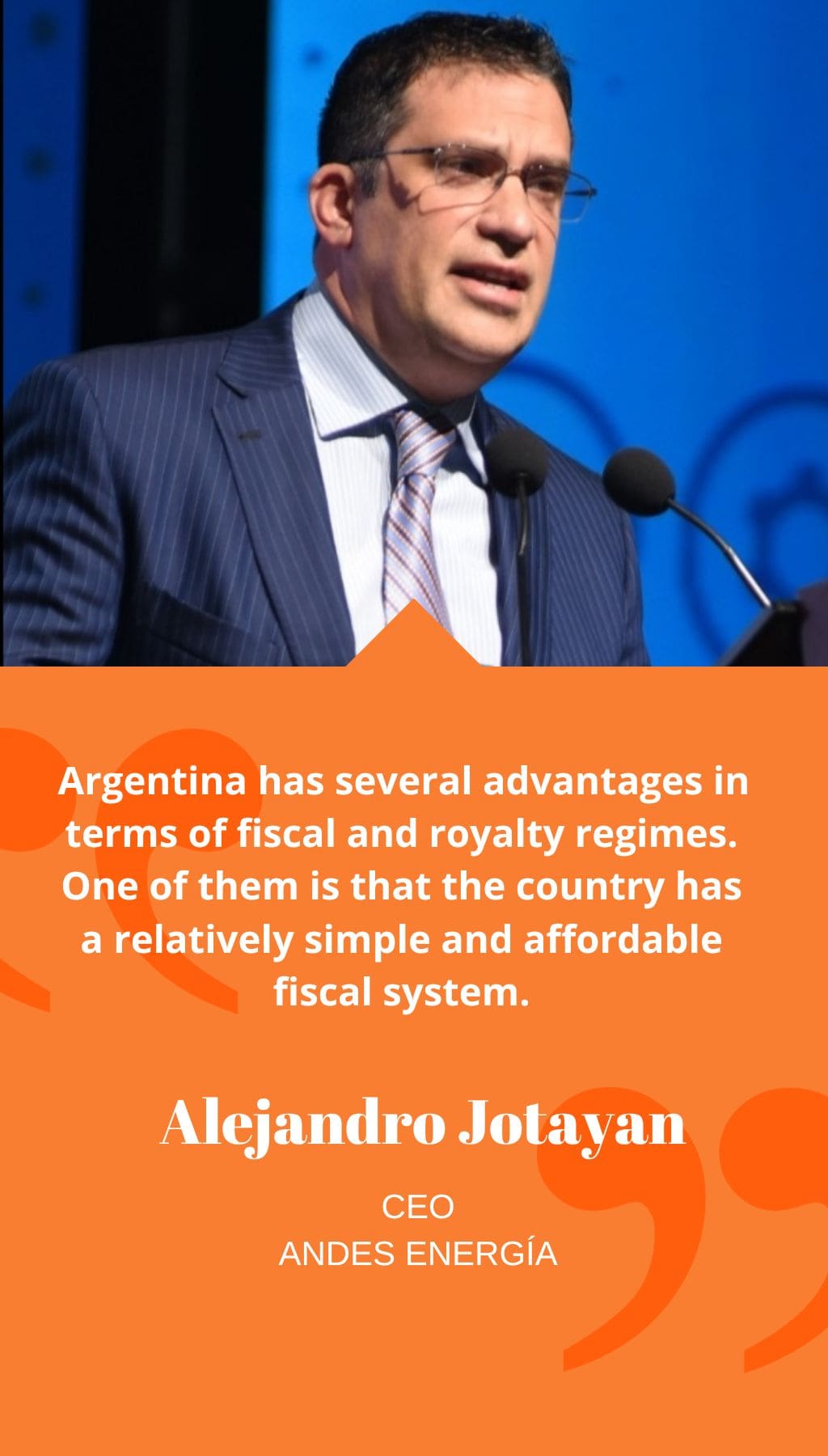
- Argentina | 25 April 2017

Could you provide some background on Andes Energía?
Andes Energía was founded in 2007, primarily focused on exploration and utility assets in Argentina. Since then, the company has grown in terms of geographic coverage and production, and has since de-merged its utility business. In 2013, the company was producing 300 barrels per day (bpd), and now produces approximately 3,500 bpd. Andes currently has 25 million barrels of 2P reserves and more than 600 million barrels of oil equivalent of certified reserves, with 90% of the reserves located in Vaca Muerta. The company has become a South American independent with knowledge of the region’s political, geological, and industrial environments. Two-thirds of Andes’s production and reserves come from operations in Argentina, while the rest come from its Colombian operations.
Why are fields like Chachahuén important to independents like Andes, and how will financing strategies for Argentine exploration and production (E&P) companies involved in unconventional activities differ from those in the United States?
Independents like Andes find fields like Chachahuén important because developing conventional onshore wells in Argentina has several advantages. For example, it is relatively cheap, with each well costing Andes 20% of approximately $1.3 million in Chachahuén. Operating costs in conventionals are also relatively cheap, ranging from $16 to $20 per barrel, so with a low initial investment and low operating cost, the payback period for investing in shallow onshore conventional is quick and profitable at prices above $35 per barrel. On the other hand, unconventional developments demand a longer payback period but offer a bigger volume of reserves, so at appropriate oil prices, the value creation of the unconventional is huge.
In the United States, mid-sized companies financed a significant portion of their unconventional activities with local bank loans. However, Argentina’s banks lack sufficient capital and industry knowledge to fully finance necessary investments in unconventional plays, and Argentina’s current country risk bars local E&P companies from international capital at reasonable cost. E&P companies interested in unconventional activities must find alternative financing strategies, such as financing through not only debt but also equity and their own cash flow. Holding producing conventional assets can provide the cash flow that E&P companies in Argentina need to finance unconventional activities.
What are some differences between operating in Argentina and Colombia?
Although production is higher in Argentina than in Colombia, Argentina has less than 20 operators (most of them big companies), whereas Colombia has over 100 (most of them small- and mid-sized). From 2006 to 2012, Colombia duplicated its production, in part due to considerable capital inflow from newcomers. The difference in number and size makes a difference in the competition among companies. While Colombia offers consolidation opportunities, Argentina will need to attract more midsize operators. Another big difference between both countries is that in Argentina, it is easier and quicker to get the permits to drill, there are more rigs working in the country, and there is a more established oil industry culture.
What are Andes’s thoughts about the fiscal and royalty regime in Argentina?
Andes believes that Argentina has several advantages in terms of fiscal and royalty regimes. One of them is that the country has a relatively simple and affordable fiscal system, with corporate taxes amounting to about 35% of net income, and royalties ranging from 12% to 18%, which is relatively low compared to OECD countries like the United States and Canada. Recently, the government has released a new regulation that allows companies to extend concessions during 10 years, paying an additional 3% of royalties, which is very convenient for companies operating in licenses with potential for unconventional resources.














